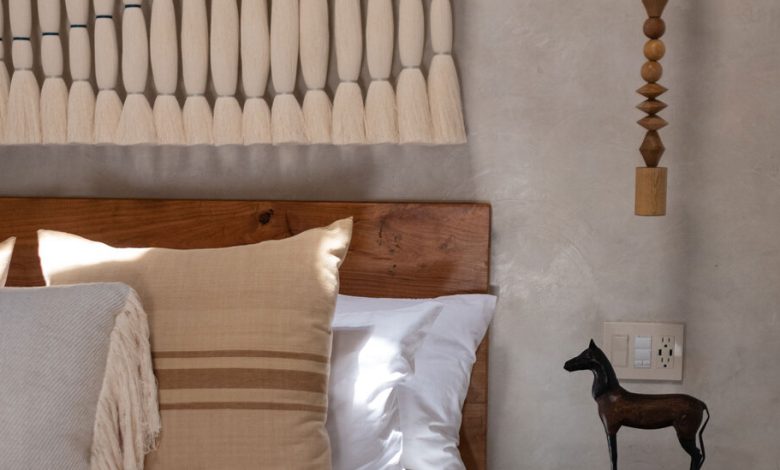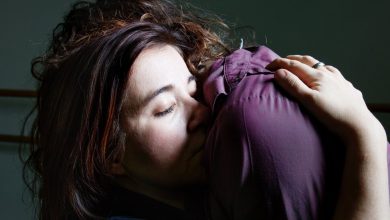A Tequila Distiller Turns a House into a Showcase for Mexican Design

IN 2008, WHEN the marketing executive Bertha González Nieves began brainstorming with the MTV creator Bob Pittman on what would become their cult tequila brand, Casa Dragones, she often stayed at the guesthouse he kept not far from his hillside estate in San Miguel de Allende, about 170 miles northwest of Mexico City. While Pittman’s house was grand, González Nieves’s living quarters, on a narrow plot on Calle Recreo, a bustling street in the middle of town, were relatively modest. Still, the property, hidden from passers-by behind a narrow cyan blue facade, was steeped in historic significance. Parts of the complex — three stand-alone buildings gathered around a courtyard, some containing only a single high-ceilinged room — dated to 1671. It had once been the site of stables for Dragones de la Reina, the cavalry regiment of Ignacio Allende, an army captain who helped Mexico gain independence from Spain in the early 19th century. How better to honor him, the entrepreneurs agreed, than to name both the house and the tequila after his troop?
Over the years, González Nieves, 53, Casa Dragones’s chief executive officer, and her wife, Mishele Wells, 56, its chief marketing and creative officer — who also have residences in New York and Mexico City, González Nieves’s birthplace — stayed in those guest quarters so often that they began to feel as though the 4,000-square-foot space was their own. In 2018, they took over the property from Pittman and, during the pandemic, hired the architects Will Meyer from New York and Marco Valle, who practices nearby, to renovate its old stone walls. For the interiors, González Nieves turned to the Mexico City-based freelance curator Ana Elena Mallet and Raul Cabra, a designer working in Oaxaca. The idea was to transform the place from a rustic retreat with sombreros mounted on the walls and serapes draped over chairs into a four-bedroom home showcasing 20th-century and contemporary Mexican design.
The project was deeply personal: González Nieves has long felt that the country’s creative legacy is underappreciated. “Anything artisanal from Europe is perceived as being of higher value,” she says. “I’ve always believed Mexican craftsmanship is at that same level.” As such, the storied address was a perfect canvas for what Mallet and Cabra have named midcentury Bajio, referring to the style developed throughout the five-state region that includes Guanajuato, where San Miguel de Allende is located.
ALTHOUGH THE BAJIO has for hundreds of years been a crafts hub — here, the broken pediments and twisted columns of the European Baroque mingle with Indigenous culture and materials, including contributions from the nomadic Chichimeca tribes who arrived before Spanish colonization — by the middle of the 20th century, many of its towns had been abandoned. In the 1950s, the local authorities began to offer non-Mexicans incentives to buy and restore decaying buildings, and a vanguard of American and Canadian painters, sculptors and other makers descended, leaving an indelible mark on vernacular culture.
Among them were the Canadian artist Gene Byron, who in 1954 bought a 17th-century silver-ore-processing hacienda and expanded on the local hammered-tin technique; the Venetian architectural designer Giorgio Belloli; and Don S. Shoemaker, who moved from New York and made furniture and decorative objects out of cocobolo, a native rosewood. Their work borrowed from international modernism, as well as from a local aesthetic rich in natural fibers and leather. For Casa Dragones, Mallet and Cabra have blended pieces by these pioneers of Bajio design with those by a new generation of Mexican artisans, creating an environment that feels thoroughly contemporary in its layered, monochromatic restraint.
One enters through tall pine doors surrounded by a sculpted archway onto a long open corridor overhung with a bower of bougainvillea and lined with terra-cotta planters containing palms, peace lilies and devil’s vine. The hall leads to a pair of small structures, each holding a lone ground-floor bedroom; in one, a wheat-straw wreath by the Michoacán-based master weaver Antonio Cornelio Rendón hangs on the wall above the bed, and a huge pendant light by the Merida-based designer Angela Damman, made from the shaggy leaves of the sansevieria plant, dangles from the ceiling. In an adjacent bathroom, a mirror is flanked by bird-motif sconces repurposed from Byron’s candelabra.
The walkway flows into the outdoor living room, centered around an ancient walnut tree, with a pair of contemporary chairs based on parteras — birthing seats often found in the Bajio — and geometric wicker lounges designed by Clara Porset, the famed Cuban furniture maker who relocated to Mexico in the 1930s. A copper-topped dining table occupies a shaded alcove surrounded by saddle-inspired chairs of leather and tzalam wood.
Beyond the courtyard sits another structure, with two stories; on the garden level is a small kitchen with Viscount Grey marble counters, where celebrated chefs, including Daniela Soto-Innes, formerly of New York’s Cosme and Atla restaurants, sometimes cook for González Nieves and Wells and their guests. On the second floor, up an exposed winding staircase hung with a 22-foot-long illuminated brass sculpture by the Mexico City-based designer Héctor Esrawe that resembles a floating bullet, the feeling is distinctly darker, the walls dominated by paintings that allude to the space’s military equestrian past. The primary bedroom, one of two on the landing, lit by a fire in the stone hearth during the cooler months, is moody, with a rare Shoemaker sling chair and, above the bed, an abstract 5-by-8-foot tapestry by Trine Ellitsgaard, a Danish textile artist living in Oaxaca. The imposing work — made from the black-dyed sheep’s wool skirts of the Chamula women of Chiapas, bisected with a strip woven from reflective glass threads — embodies the paradox of the house, appearing simultaneously calming and electrifying. “It had to be comfortable. It’s not a museum,” says González Nieves, settling into a minimalist leather-and-iron Belloli chair on her rooftop deck as the sun sets over the town’s neo-Gothic parish. “But still, it had to awaken an emotion.”




